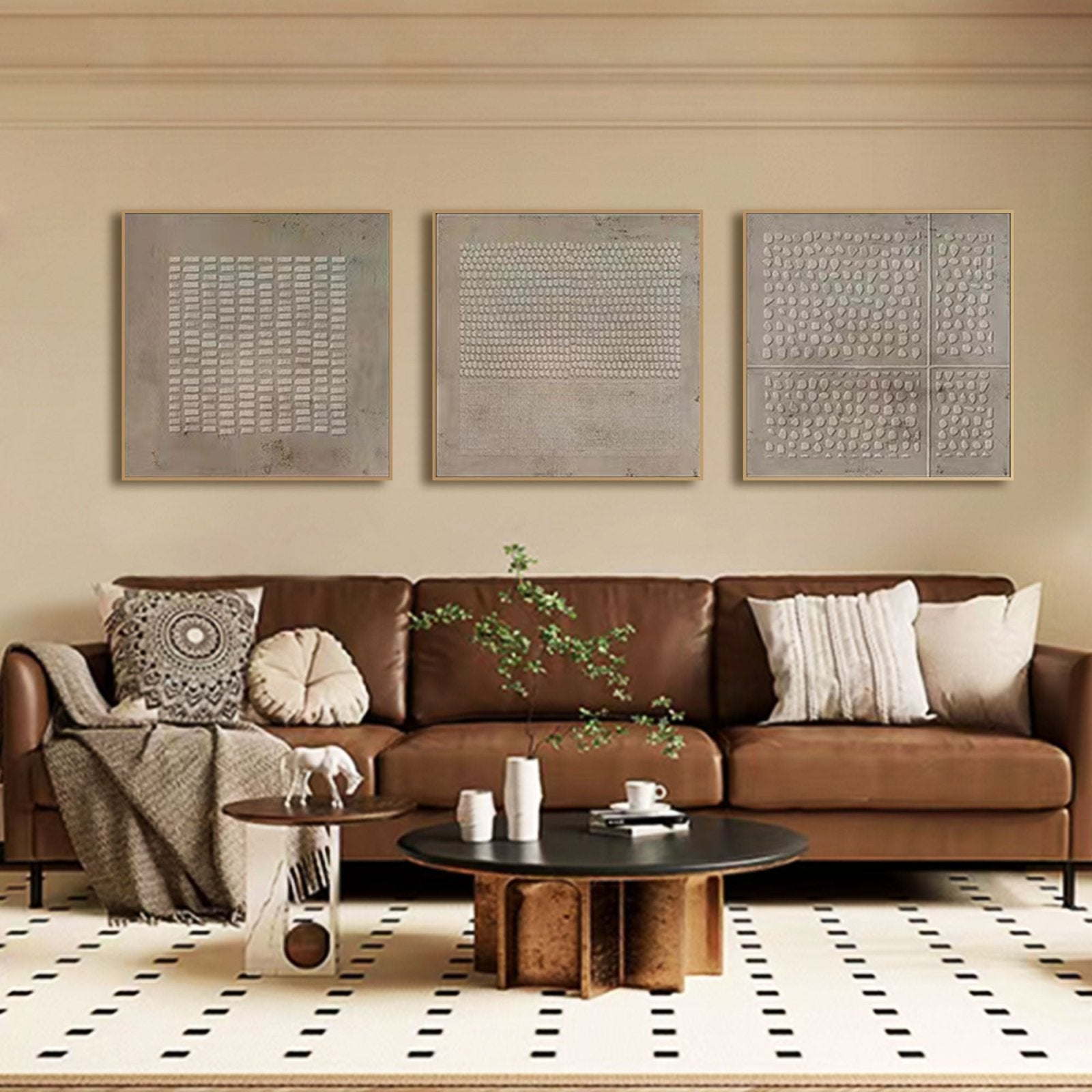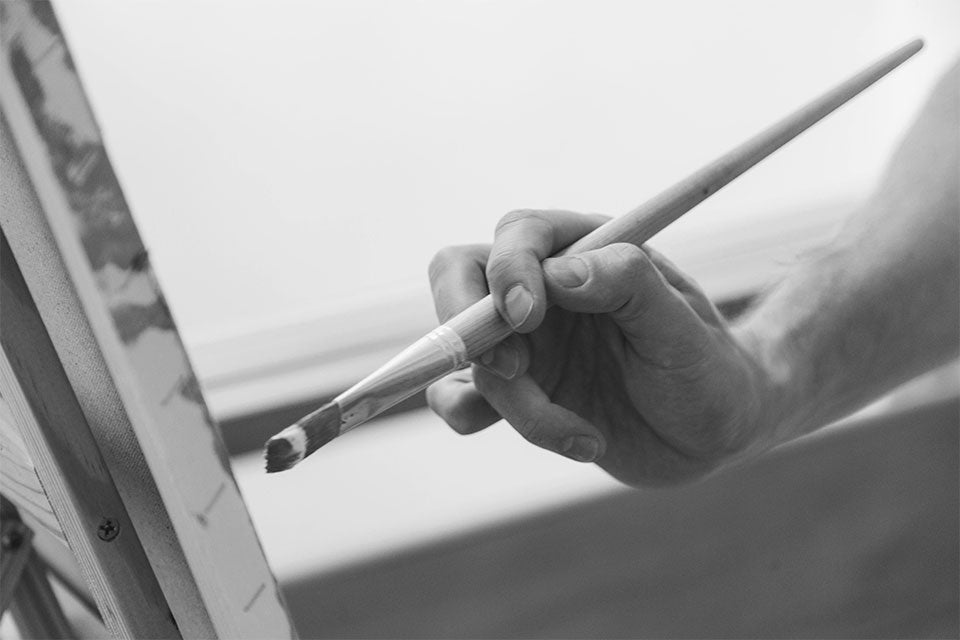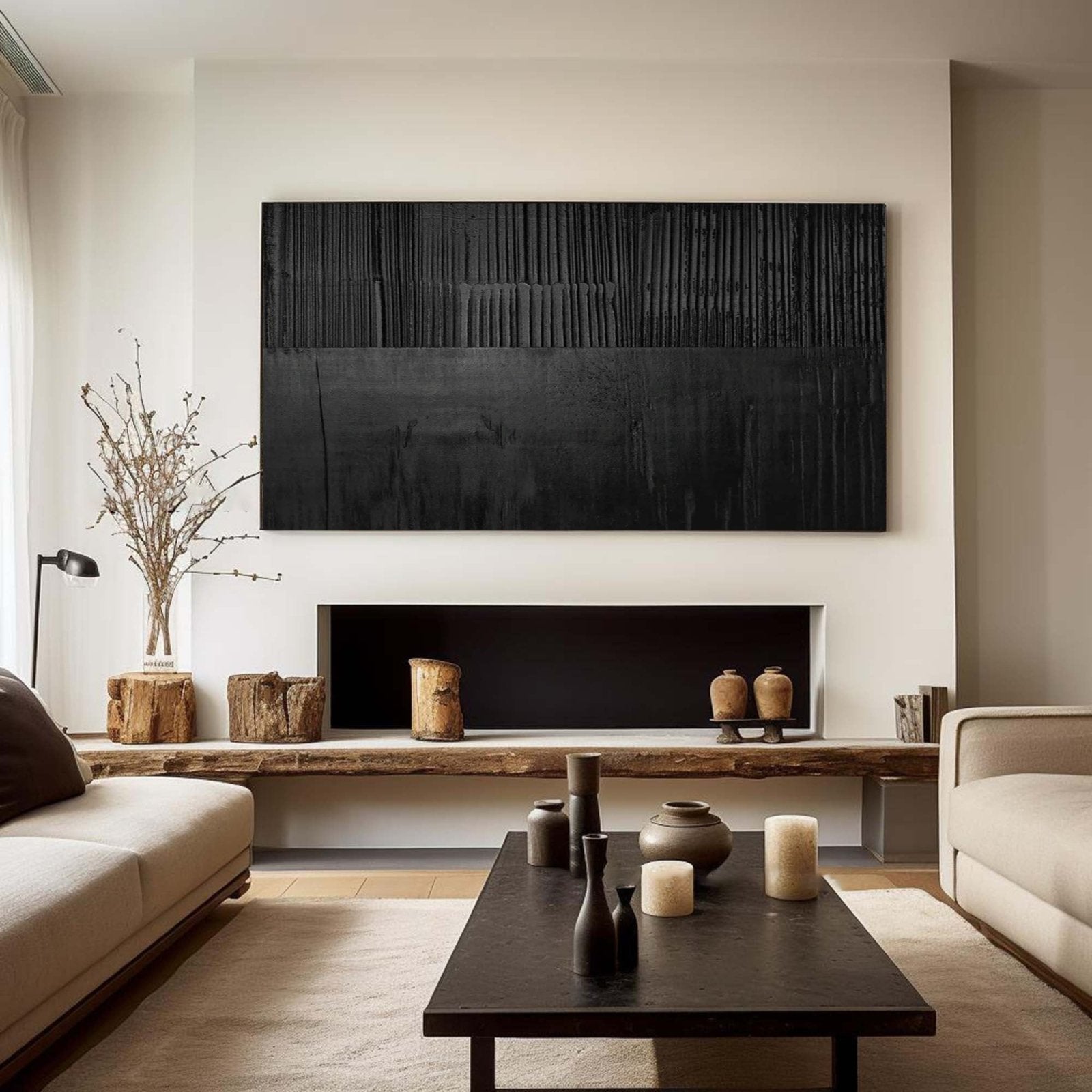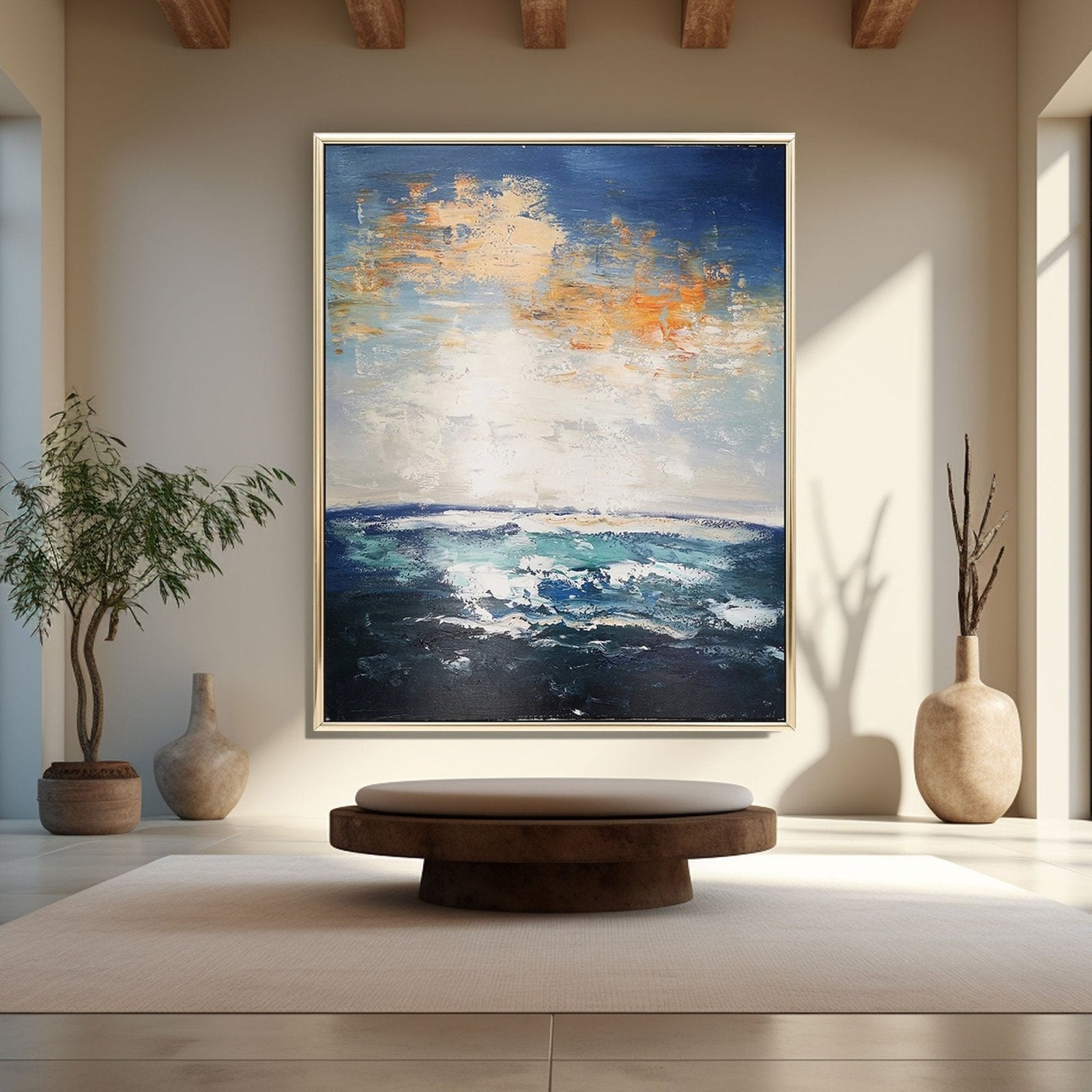
What Is Wabi Sabi Wall Art
Catalog:
- Introduction
- Philosophy of Wabi-Sabi
- Exploring the Origins
- Symbolism and Meaning
- Modern Interpretations
- Core Principles of Wabi-Sabi
- Key Features of Wabi-Sabi Wall Art
- Incorporating Wabi-Sabi into Your Home
- Conclusion
- Further Exploration

There’s a popular saying that “even imperfections can express beauty,” and that is exactly what the wabi-sabi culture is all about. The wabi-sabi culture originates from old Japanese traditions. The concept encompasses Japanese design, art, lifestyle, culture, philosophy, and personal emotions, into one.
If you have ever been to Japan, you will notice that many of the people there and their culture appreciate the natural beauty of both animate and inanimate objects. The people there appreciate broken crockery, misty landscapes, molded wabi sabi furniture, and distorted reflections of nature on the water.
The idea of wabi-sabi is simply understanding that everything on this planet, whether animate or inanimate, ages with grace, and becomes more beautiful as it wears down, fades, or scars. It simply depicts that old and worn out things have their own elegant charm. This concept has been introduced into many areas of life, including wall art.
Exploring The Philosophy Of Wabi-Sabi
There are two major stories that depict the origin of wabi-sabi in Japan. According to the first story, the roots of wabi-sabi takes us back to the delicate world of the Japanese tea ceremony. In the 14th century, when the tea ceremony was a big affair in Japan, the use of highly luxurious objects imported from China that were shaped to perfection were used.
Not long after, a Zen monk named Murata Shuko developed a simpler tea ceremony in response to the initial one. The monk chose to serve tea in local, handcrafted utensils, which had several imperfections. Initially, the idea wasn’t rapidly adopted, but in the 16th century, a tea master named Rikyu replaced the luxurious Chinese pieces with local craftsmanship. He even set up his tea pavilion in a building similar to a peasant's home.
The second story is closely similar to the first as it also involves Sen no Rikyu. Sen no Rikyu was a monk that played a significant role in theorizing tea ceremonies. The story went that the monk wanted to learn the ancestral art of tea ceremonies from a master. His tea master thus asked him to look after the garden during his learning process.
Right before presenting his work to his master, Rikyu shook a cherry tree in the garden, which led to some of its sakura flowers falling to the ground. The imperfection depicted by the fallen flowers brought a lot of beauty to its surroundings, which gave birth to the concept of wabi-sabi in Japan.
The Japanese use the ‘enso’ wabi-wabi symbol to depict the concept. It comprises an unfinished circle that is made as part of an infinite stroke or motion. It is usually drawn using black ink.
The term Wabi-Sabi is taken from the Japanese words wabi, which translates to “less is more,” and sabi, which means “attentive melancholy.” The wabi-sabi concept preaches an awareness of the transient nature of earthly things and a corresponding beauty in the things that express impermanence.
Wabi-Sabi art presents itself as an alternative to the modern days’ fast-paced, mass-produced, artificial world. It reminds us to slow down and derive pleasure in the simple, natural beauty around us.
Modern examples of wabi-sabi include the artistic development of dry garden stones and kintsugi, the technique of using gold to mend shattered artifacts. Drawing attention to a location's or thing's flaws is a method to honor and value it. Breakage in the context of kintsugi signifies regeneration by emphasizing it rather than hiding it. Thus, the item represents the start of a fresh cycle.
Japanese Raku and Hagi pottery can also serve as excellent examples of wabi-sabi design. Hagi pottery is distinguished by its neutral colors and straightforward forms, whereas Raku ceramics are handmade and have dark hues and an uneven, rough, and cracked appearance.
Some core principles of wabi-sabi include:
Impermanence
Impermanence simply means the state of lasting for only a limited amount of time. It depicts the aging process, and shows that nothing lasts forever. This is one of the core principles of wabi-sabi, and it is often incorporated in the applications of this concept, including wabi-sabi wall art.
Imperfection
Imperfection is a state of being incomplete or blemished. The same applies to wabi-sabi texture art. The concept highlights the beauty that lies in blemished objects or imperfection. It could be an unfinished wall or furniture, cracked or chipped ceramics, or even an object placement.
The Buddhist concept of dukkha holds that existence is essentially unpleasant and unfulfilling. The wabi-sabi sign also represents life as shabby and lonesome. Given this, the concept of wabi-sabi is to accept the flaws in the objects in our environment.
Because of this, items created in the wabi-sabi style are asymmetrical and full of flaws. You can employ mismatched or asymmetrical furniture and other items in your home.
Incompleteness
Incompleteness is a state of not being finished or whole. It means to have a part of something missing. This also reflects in wabi-sabi art. For example, an incomplete paint job, or furniture with missing parts. Wabi-Sabi reflects beauty in continuity in the sense that something incomplete can later become whole.
Transient
Just having greenery in your house will improve its overall aesthetic. Wabi-Sabi advocates for having plants on your windowsill or adding small houseplants to your balcony, such as a rubber tree, prayer plant, ficus, or hoya. Indoor trees and plants contribute to the overall bloom scape and create a lovely, welcoming feeling in your house.
Refined
Even though wabi-sabi is a flawed aesthetic, it is difficult to improve. It's not that anything imperfect may be deemed wabi-sabi; rather, the term is used extremely seldom to characterize items that radiate the purest form of beauty, or something that is both aesthetically attractive and defective.

Key Features Of Wabi-Sabi Wall Art
When incorporating wabi-sabi wall art into your home, here are some key features that can help you achieve the greatest effect.
Colors
Instead of using bright, vibrant colors, when incorporating wabi-sabi wall art into your home, stick to earthy tones and colors like beiges, creams, browns, and muted greens to give your space a more raw, natural feel. You can also use texture art, textured paintings, and wall accents to create an outdoor feeling.
The warm natural colors appear softer and more closely resemble the colors seen in nature. Moreover, they perfectly complement the interior's equally delicate style. However, you can occasionally add splashes of color to break up the overall tone-on-tone effect. Try warm colors like pistachio or forest green, sunny yellow, or milky blue.
Natural hues are the best color palette when it comes to respecting nature and its shapes and textures. When incorporating wabi-sabi principles, respect the natural tones of each wall, object, and fabric. Some individuals also admire the beauty of decoloring walls over time, which is in respect to the aging process.
Materials
A homes’ design can only be wabi-sabi provided the building materials, decorative objects, and furniture are organic, sustainable, and friendly to the surrounding fauna and flora. In addition, it is encouraged to use local materials during construction, as this is a great wabi-sabi architectural practice.
However, while wabi-sabi designs are centered on raw materials, you can incorporate noble materials such as leather, silk or velvet into your textured wall art. But you must make sure they are used correctly and in neutral tones. For example, leather can add a touch of warmth, while giving off a luxurious feeling in a wabi-sabi space.
Silk or velvet can be used on textiles like curtains, to give your walls a soft and comfortable texture. However, take note not to overuse these noble materials, as they could defect from the simple and natural ambience that is a core characteristic of wabi-sabi designs.
Textures
Texture is very vital when it comes to wabi-sabi wall art. Textured wall art isn’t restricted to textured art on canvas alone, you can also have a white textured wall art, or you can also use different wall finishes to introduce texture to your walls. To add that aged and imperfect look to your homes’ wall, you can use limewash, heavy plaster, basic plaster, or venetian plaster to add more texture.
Appreciating old or aging parts of your home is a vital part of wabi-sabi design. If the walls of your home are peeling, wabi-sabi highlights the beauty of the process. The point behind wabi-sabi wall art is to accept what is around you and discover the beauty in it. Instead of trying to fix naturally aging parts of your wall, try embracing them.
Although wabi-sabi encourages seeing the beauty in imperfection, always consider your safety, as some aging or damaged walls can have negative health effects. You can also introduce different textured artwork to your walls if you don’t want a textured wall. It is common to use a textured painting on a natural wall in wabi-sabi homes.
Forms
Wabi-Sabi homes incorporate minimalist designs, and so do their art. Most wabi-sabi wall art possess the core characteristics of the wabi-sabi concept. That is, they mostly display natural or earthy tones, and often incorporate incomplete patterns or designs to further give off the wabi-sabi feel when you walk into the room.

Conclusion
Wabi-Sabi wall art showcases a certain beauty and tranquility in any room or home. Their natural hues, and textured feel express the beauty in simplicity and imperfection. The choices for color arrangements in wabi-sabi wall art give off a sense of harmony.
Wabi-Sabi wall art challenges us to be gentle with ourselves and our immediate environment in our daily activities. It is a concept that encourages people to embrace imperfections as a part of us. Are you interested in wabi-sabi wall art? Check out our page to find out more.




